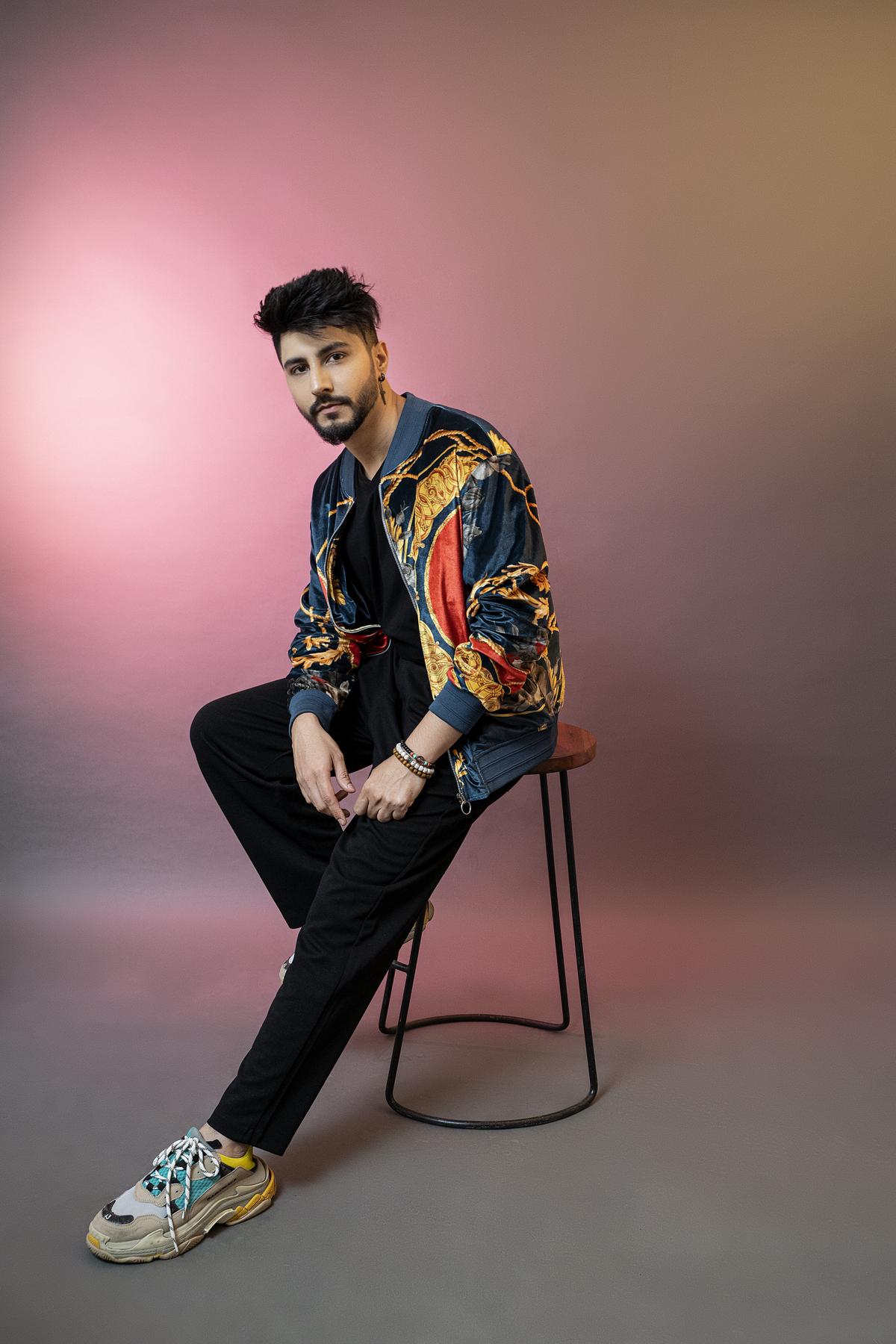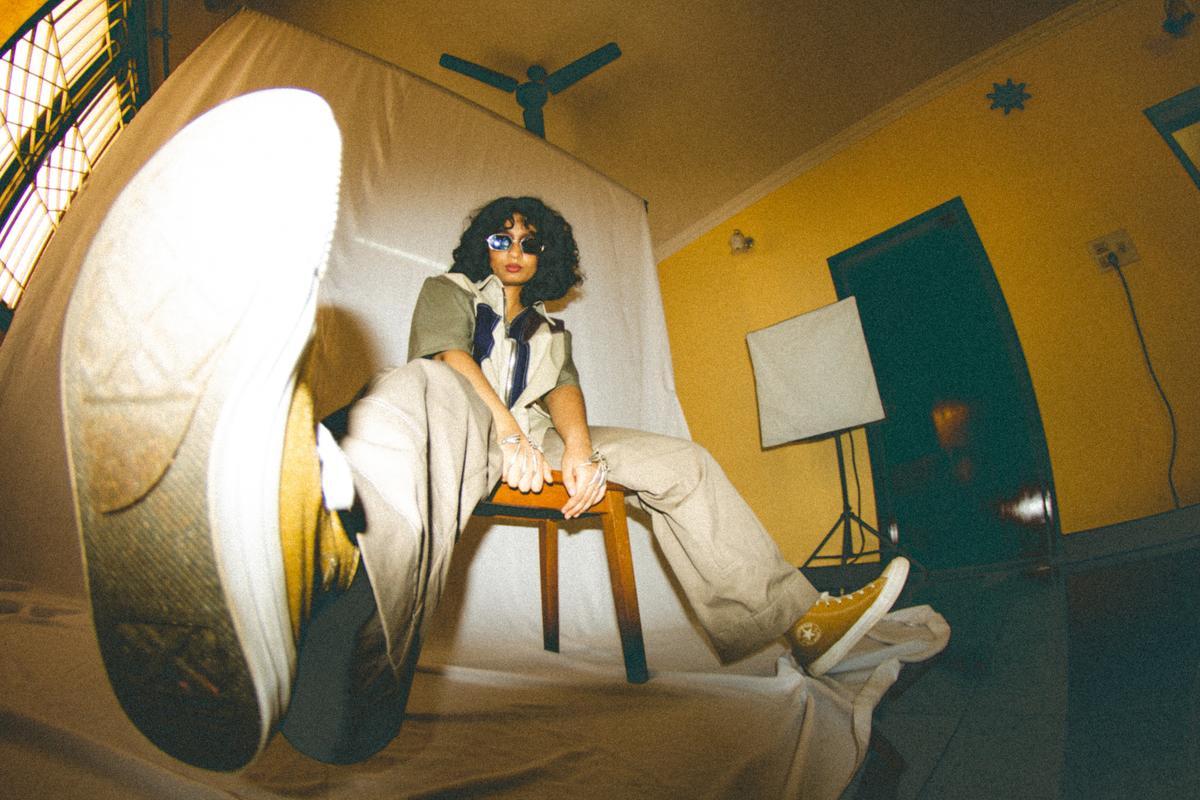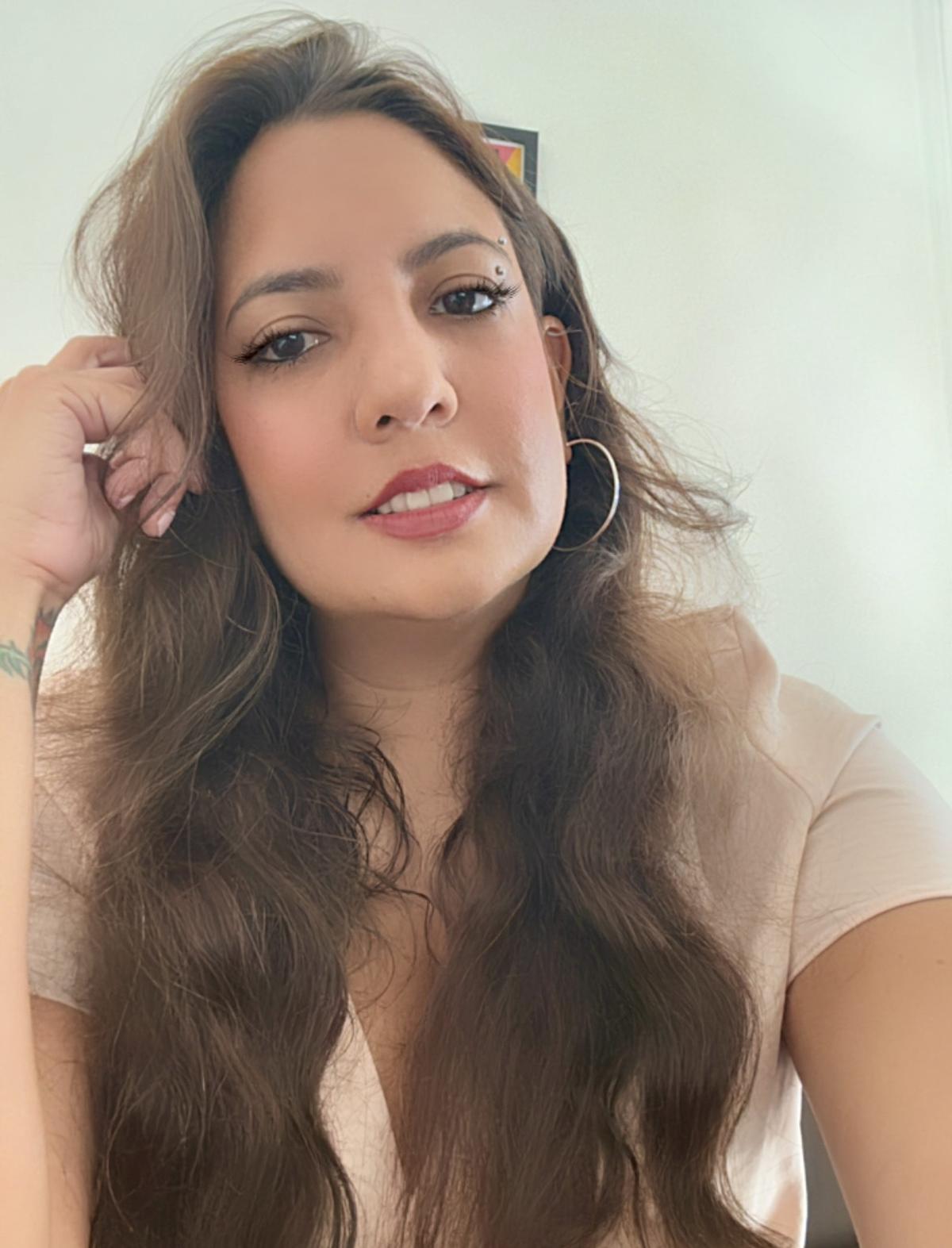Anoushka Maskey’s 2020 song ‘September Embers’ has all the makings of an international hit. The folk pop tones have global appeal, and at over 1,28,000 streams on Spotify, it’s fair to say it has its own audience. Her song was not made in some state-of-the-art studio, but with producer Pranay Bakshi aka Cosmic Grooves at his home studio. The Sikkim-origin, Mumbai-based singer-songwriter, who started out by recording guitars and ukulele through a USB microphone on her Macbook, has since steadily upgraded to a “humble set-up” consisting of monitor speakers, electric guitar, MIDI keyboard, and a condenser microphone. “For me, there is no longing for a time in the future when I’ll have more equipment or resources. All the resources are already there,” says Maskey.
Anoushka Maskey
Down South, Kerala indie artist Haniya Nafisa has over 1,86,000 monthly listeners on Spotify, attracting a chunk of her over 3 lakh Instagram followers with homemade covers of popular songs. With a few film songs in her catalogue, she can evoke the intimacy of a lo-fi electronic pop sound on songs like ‘U good?’. “The quality of music or an artist is not dependent on the resources,” says Nafisa, who recorded ‘U good?’ in her bedroom — a collaboration with Gujarat-origin artist Krameri and Kerala producer 6091.
Indie artist Haniya Nafisa
A genre-wise look at bedroom studio artists reveal pop, lo-fi, indie-folk and even hip-hop. These styles are popular perhaps because the songs don’t call for live recorded drums (like in rock or metal) or string sections (for more ambitious pop). Here, everything can be added through beat packs, sound libraries, plug-ins and digital audio workstations.
DIY your next album
Bedroom-produced music has been around for a while — from the Beach Boys in the 1960s (who recorded what are now considered the first two ‘lo-fi’ albums in 1967) to punk bands and the No Wave genre, and later, hip-hop producers. And like all movements in art, there’s a certain cyclical nature involved. Over the last decade, the rapid digitalisation of music making and distribution has fuelled this trend, and the pandemic helped the DIY music movement gain traction faster, especially among Indian musicians.
They followed in the footsteps of performers such as slacker rock artist Mac DeMarco, singer-songwriter Billie Eilish — whose Grammy winning album, When We All Fall Asleep, Where Do We Go?, was recorded in her brother’s bedroom — and British singer Kenya Grace. The electronic-pop artist’s song ‘Strangers’, from her 2023 album The After Taste, was recorded entirely in her Hampshire bedroom, and it not only went viral but also topped the Billboard Dance/Electronic Songs chart last October.
Closer home, Indian artists have become aware of the ease and economic logic behind knowing how to produce one’s own music. Where before it was solely compelled by a lack of resources, now it’s a creative decision as it gives artists control over every aspect of the production. “How I use what I have and how I collaborate with my community makes all the difference,” states Maskey.
Arjuna Harjai, based in the U.K., is known as the One Minute Composer. Through the YouTube series — in which he thinks up song ideas, seated at his home setup with his wife Divya Harjai — he says he is “rediscovering the joy of music-making”. The series, which launched this January, was spurred on by his subscribers pushing him to innovate “and present music in a more raw manner”, akin to a vlog. This has led to songs like ‘Winter ayun waliye’ and ‘Mangoge na?’, which have blown up on social media, with over 8,57,000 views and 67,000 views on YouTube, respectively.

Arjuna Harjai
Distributors come courting
The power of the internet and the democratisation of technology mean artists have access to a lot of music-making gizmos. Think digital audio workstations such as Steinberg Cubase, and compact, affordable recording equipment. Grace has talked about relying on her intuition and YouTube tutorials to master recording software Logic for The After Taste album.
And for those who want to scale up, there are a plethora of music distributors today who offer better reach through editorial playlist placements, AI-assisted marketing tools, and opportunities to pitch to music festivals. “After talking to a few artist friends, I found that DistroKid [an independent digital music distribution service] is affordable,” shares Nafisa, whose song ‘U good?’ is part of Spotify’s Malayalam Indie playlist. “It was easy to understand and navigate as a platform, and the artist gets a lot of freedom.” It runs on a yearly fee and lets artists release their content when they want. In Bengaluru, Rudy Mukta is also considering a bigger set-up. “I like the idea of slowly building up and learning about home studio equipment,” says the Toto Music Award-winning singer-songwriter, who started out with her friend’s iPad. “But I want to incorporate more live instrumentation in my songs.” And this will require professional intervention.

Rudy Mukta
| Photo Credit:
Lendrick Kumar
Outside the home
What the big music distribution companies are offering:
MADverse
Plans: Free (with one release per month and 85% royalties), ₹599 per year (unlimited releases and 90% royalties) and ₹2,999 per year (95% royalties, cover art studio access, and editorial playlist pitching)
MGMH Groove
Plans: $7 or ₹600 per song (with 93% royalties, lifetime distribution, and no subscription fees), $20 or ₹1,600 per album (same perks as a single)
TuneCore
Plans: Free (unlimited releases, 80% royalties), ₹1,299 per year (unlimited releases, 100% royalties), ₹2,299 per year (unlimited releases, 100% royalties, cover art creator and more), ₹3,999 per year (for labels and professional artists with unlimited releases, 100% royalties, access to exclusive partnerships, expert advice and more)
CD Baby
Plans: $9.99 per song or album (91% royalties, marketing tools, and worldwide monetisation)
DistroKid
Plans: ₹22.99 per year (100% royalties, playlist spotlight pitching, and more)
Artists, however, are wary about music distribution companies because they charge more for add-on services, and some take a cut of the revenue generated from streams. Still, companies such as Gurgaon-headquartered MADverse are justifying their prices. Founder and CEO Rohan Nesho Jain says they provide tools to bolster the DIY ethos of bedroom musicians, including an AI art cover generation tool. “We also offer data-driven insights that assist artists in understanding their audience and honing their strategies.” Over 51,000 artists from 60 countries have signed up to release music or use other MADverse services, with a significant chunk of them making pop and indie music. “Hip-hop and rap also have a significant presence, showing the versatility and storytelling skills of independent musicians in a variety of regional tongues,” he adds.

Rohan Nesho Jain of MADverse
Compared to the year-old MADverse, Ritnika Nayan, the founder of music company MGMH, offers a different kind of interaction. Early last month, they launched their distribution service MGMH Groove, and they hope to be a conduit for artists to put their music on Spotify editorial playlists, take it on the road with a tour, and have it placed in TV shows or movies. “In a sense, the artist gets the support they require without signing exclusively to a label. We want artists to be empowered,” says Nayan, adding that they’ve got 15 releases scheduled and over 25 accounts in their first week.

Ritnika Nayan of MGMH
Singer-songwriter Govind Thampi
Artists have their wishlists, too. Doha-raised Indian singer-songwriter Govind Thampi aka Thumpii, for instance, wants “more reliable ways of sending your music to playlist editors and other promotion partners”. Considering the rising number of bedroom artists today, they will soon be dictating more terms to distributors.
The writer is a Bengaluru-based independent music journalist.

